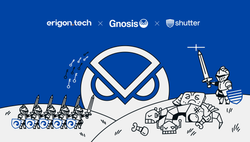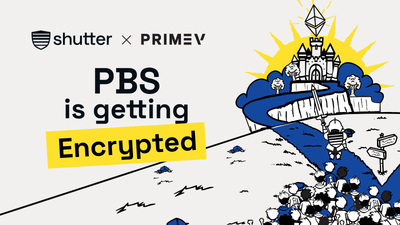We’ve Seen This Before. It’s Happening Again.
In 2014, Michael Lewis published a book called Flash Boys. It pulled back the curtain on Wall Street’s dirty little secret: a small group of trading firms had rigged the game. They spent millions on faster cables and servers so they could see ordinary investors’ trades before they went through - and jump in ahead.
“The U.S. stock market was now a class system, rooted in speed, of haves and have-nots. The haves paid for nanoseconds; the have-nots had no idea that a nanosecond had value.” ― Michael Lewis, Flash Boys: A Wall Street Revolt
It was front running: legal in the shadows, profitable for insiders, devastating for ordinary investors. Costing average traders billions. The outrage was so loud that regulators stepped in and exchanges built “speed bumps” to slow the cheaters down. The message was clear: markets only work if everyone plays by the same rules.
But here’s the twist: that story didn’t end on Wall Street. It just moved on-chain.
Same Game, Now on Ethereum.
Today, front running looks different on-chain. The root cause is from the transparent nature of public blockchains.
That’s because by default, every transaction passes through Ethereum’s unencrypted public mempool, which is a waiting area for all transactions until they’re confirmed. And everything in the public mempool is visible to all.
It’s here that bots see your transactions coming, then rearrange or even replace them for their own gain.
They profit while you lose - often just a few cents, but sometimes half your trade. In fact, Since 2020, more than $1.8 billion has been drained from Ethereum users through Maximal Extractable Value (MEV), much of it from malicious tactics like front running and sandwich attacks.
If this feels familiar, it should. It follows the high-frequency trader playbook, only it’s now more automated and running every minute of every day.
Wall Street Solves the Issue, Ethereum Offers Patches.
After high-frequency traders upended the markets on Wall Street, the market and regulators responded swiftly to address the problem.
But on Ethereum, the community has introduced market infrastructure “patches”.
For instance, MEV-Boost (Proposer‑Builder Separation out-of-protocol) has specialized builders compete to provide the most valuable block to the validator, enhancing competition.
Other efforts include Order-Flow Auctions and Private Routes, which minimize public leakage and provide rebates to users.
These “patches” make extraction more clear, help to alleviate the problem, and return value to users, but key problems still persist:
- By default, your transactions are still visible before inclusion in the block. Therefore, your transactions are still at risk.
- This has caused a small group of builders to win a significant share of the blocks.
- Ethereum users are still made to decide who to trust and which special RPC or DEX to use. MEV experts can navigate this maze, but average users shouldn’t be expected to.
Institutions Are Arriving. Ethereum is at a Crossroads.
Markets stay fair because we build guardrails. Wall Street learned that lesson the hard way, and trust was only restored after the rules were changed.
Now Ethereum is at a crossroads. More institutions and normies are coming on-chain every day. They arrive already accustomed to TradFi regulation and standards, and they want to ensure their transactions won’t be gamed.
And if Ethereum doesn’t meet that expectation, they’ll look to chains that do. New L1 chains, such as Circle’s Arc, have emerged to capitalize on the up-and-coming stablecoin boom.
The Choice in Front of Us: Maintain Status Quo or Address it?
If we want Ethereum to continue serving as the settlement layer for open finance, we need to ensure that users are protected by default, not just through advanced tools.
While there’s no one silver bullet solution, encrypted mempools offer the strongest chain-wide guardrail, and can bring MEV protection to all Ethereum users.
In short, encrypted mempools are a distributed, protocol-level safeguard that protects users from front running, sandwich attacks, and real-time censorship. They do this by temporarily encrypting transactions before they enter the public mempool, keeping their contents hidden until the transaction is ordered in the block. With transaction contents hidden, it becomes nearly impossible for attackers to front run or sandwich attack a transaction.
The beauty of this design is that it blocks malicious MEV while still allowing for benign MEV, like arbitrage and liquidations. This way users stay protected and markets stay healthy.
The Flash Boys story is repeating on-chain. We can keep watching it on Ethereum, or we can introduce a solution to address it.
Learn more about encrypted mempools and what they can bring to Ethereum:
- Unveiling The Road Towards a Distributed Encrypted Mempool on Ethereum
- Encrypted Mempools and Ethereum’s Roadmap: Fix or Distraction?
- Debunking Myths and Misconceptions Around Encrypted Mempools
- Understanding Good and Bad MEV - and How Encrypted Mempools Stop the Bad
Join the Shutter community on Telegram and Shutter DAO 0x36 - and help us address front running on Ethereum:
- Telegram: https://t.me/shutter_network
- Shutter DAO 0x36: https://app.decentdao.org/home?dao=eth%3A0x36bD3044ab68f600f6d3e081056F34f2a58432c4







